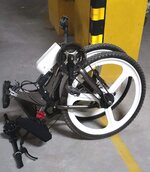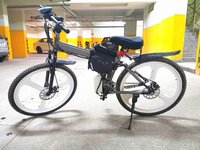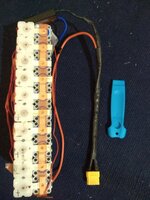Thankfully, I got my old battery pack disassembled from a professional.I think he’s duly warned. Using Micahs’ book with attention to details like safety glasses and no jewelry are top issues. I was being super careful with a disassembled pack and didn’t notice a small piece of wire on my silicon work surface. I set the bare pack down and shorted out on the wire bridging cells. Instant POW! FLASH! Trashed a half dozen PF cells.
I verified that all the old cells were fine before using them in my reconfigured battery pack. I still have the other 10 working cells stored in a safe place.



